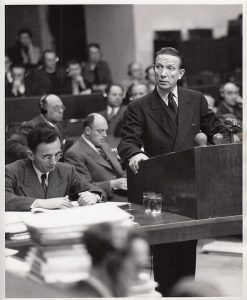
Introduction
Opening statements are an important part of criminal and civil trials in the United States. They are the first chance for parties to tell the judge and jury their version of the case. When done well, an opening statement can paint a vivid picture of the evidence that the courtroom is about to hear.
In civil trials, the plaintiff presents their opening statement first. In criminal trials, the prosecutor is the first to give an opening statement. In either case, the defendant gives their opening statement second. Depending on the state, this can occur immediately after the plaintiff or prosecutor’s opening statement, or later in the trial, just before the defendant begins presenting evidence.
Although opening statements aren’t mandatory, most lawyers consider them an essential tool during litigation. A strong opening statement can set the tone for the entire trial, so lawyers need to get it just right. The opening statements of a trial are the first chance that each party has to present their version of the facts to the judge and jury.
What is the Purpose of an Opening Statement?
The main purpose of an opening statement is to give the jury an overview of the evidence in a case and explain how it all fits together. This helps the jury to understand each piece of evidence as they hear it and to anticipate how that evidence connects to your overall theory of the case.
Without an opening statement, the jury could easily get lost during the trial. In the United States, evidence is typically presented from one source at a time. For example, one witness could give their entire testimony, then another witness could give their testimony, and then pictures could be shown to the jury. Since the evidence is coming in piece by piece, the jury will struggle to see how it’s all connected.
Closing arguments can help connect the dots, but by then, it’s often too late. The jury might have forgotten key pieces of evidence because they didn’t realize their importance at the time. Instead, by explaining the evidence ahead of time in an opening statement, a lawyer can ensure that the jury understands the evidence as they hear it.
Great lawyers often think of the opening statements as telling a story. They paint such a vivid picture of the facts of the case that the jury members can picture it in their minds. Then, as the trial moves forward, the jury understands exactly where each new piece of evidence fits into that story.
Without opening statements, or with bad opening statements, the evidence at a trial can appear completely disconnected and uncompelling. With a great opening statement, all the facts will connect in a single, easily digestible narrative.
What is Not Allowed During an Opening Statement?
Although great lawyers can use the opening statement as a persuasive tool, there are many strict limitations about what they are and are not allowed to say at this point in the trial. The most important limitation is that the opening statement can only cover facts that will be presented in the evidence. Lawyers are not allowed to use the opening statement to argue the case or discuss the law.
For example, during the opening statement, a lawyer can tell the jury what a witness will say under testimony. However, the lawyer may not try to convince the jury whether to believe one witness over another. They also cannot compare expected evidence against legal standards. This type of argument is not allowed until the closing argument at the end of the trial.
Sometimes there’s a fine line between what counts as arguing and what doesn’t. This can depend on the jurisdiction of the case and even the individual judge. In addition, sometimes lawyers don’t object when the opposing counsel slips in argument because they worry that the optics of objecting might look worse to the jury than just letting the statement slide.
All of these considerations come down to experience. A lawyer who has been working in the same courthouse for many years often knows exactly where their judges draw the line on argumentative language.
It’s important to understand that even without making any direct arguments, a good lawyer can still try to win over the jury even at this early stage of the trial. They do this by arranging the facts of the case into the most persuasive narrative possible. Although they don’t directly tell the jury how they should decide the case, by presenting a strong narrative, a lawyer can leave a compelling impression on the jury throughout the entire trial.
Conclusion
An opening statement is one of the most important parts of a trial because it paves the way for everything that follows. An opening statement tells the jury exactly what to expect in the trial, which allows them to understand each piece of evidence that the lawyer presents. Experienced lawyers know that a clear, compelling narrative can have the jury on their side right from the very beginning.
